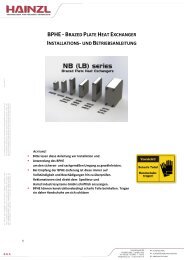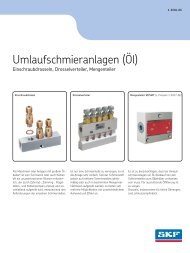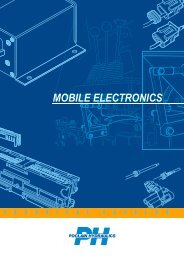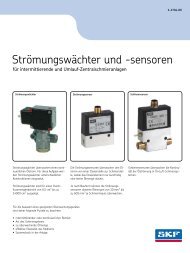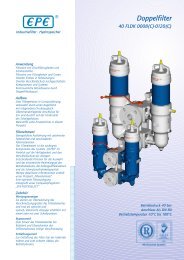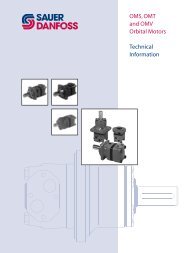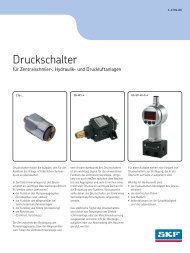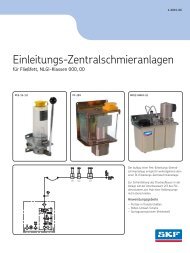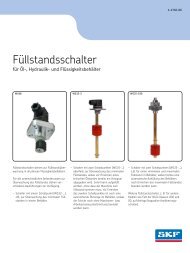Catalogue
Catalogue
Catalogue
Create successful ePaper yourself
Turn your PDF publications into a flip-book with our unique Google optimized e-Paper software.
POCLAIN HYDRAULICS<br />
VB-220 (120 l/min)<br />
VB-220<br />
• Service brake valve<br />
Emergency /<br />
Parking brake<br />
• Accumulator charging valve<br />
• 120 l/min [32 GPM]<br />
• Dual-circuit<br />
Steering assist<br />
brake<br />
Service brake<br />
+ inching<br />
Service<br />
brake<br />
Floor mount<br />
pedal<br />
Applications<br />
The Poclain Hydraulics VB-220 braking assembly contains the<br />
following components in a single manifold:<br />
• A dual-circuit accumulator charging valve,<br />
• A mechanically controlled dual-circuit service brake valve,<br />
• Two isolating valves for the braking circuits.<br />
The output pressures (at F1 and F2), for the braking circuits,<br />
can be equal or different according to a ratio F2/F1 = 0.64<br />
(VB-2E0) or 0.44 (VB-2F0).<br />
The incorporation of these functions in a compact unit reduces<br />
the risk of leaks and makes the overall size more compact.<br />
Operation<br />
During the accumulator charging phase, the built-in divider taps a<br />
constant flow from the valve supply flow and diverts it to the<br />
accumulator. When the accumulator reaches maximum (cut-out)<br />
pressure, charging stops, and the entire supply flow is directed to<br />
output S (auxiliary circuit or tank return).<br />
Each time the operator actuates the pedal, the pressure in the<br />
accumulator drops. When minimum (cut-in) pressure is reached, the<br />
valve recharges the accumulator to cut-out pressure, and so on.<br />
The service brake valve is a mechanically-controlled, three-way,<br />
graduated release dual pressure reducing valve. It is used for the<br />
precision dosing of the output pressures (at F1 and F2) proportionally<br />
to the angular displacement of the pedal, and therefore to the force<br />
applied to the pedal. This provides the feeling of braking. When the<br />
pedal is at rest ('up' position), the output pressures (at F1 and F2) are<br />
zero and the brake receptors are connected to the tank (F1 and F2 to<br />
T).<br />
When the pedal is depressed, the output pressures (at F1 and F2)<br />
increase proportionally to the angular displacement of the pedal.<br />
When the pedal is fully depressed, the output pressures (at F1 and<br />
F2) are limited to the preset pressure of the valve irrespective of the<br />
supply pressure. When a failure occurs in one of the braking circuits,<br />
the other circuit is immediately isolated by its safety valve. The circuit<br />
that remains operative can then be used as an emergency brake<br />
thanks to the energy stored in its accumulator.<br />
Accumulator<br />
charging<br />
Full power<br />
brake<br />
Options<br />
Installation<br />
25/09/2009 63



